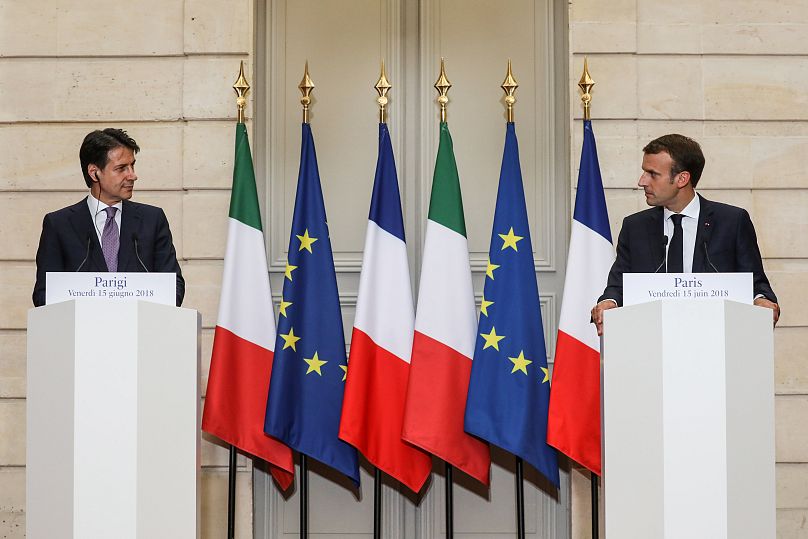As France and Italy call for a more regional response to migration, we crunch the numbers on where migrants are actually going.
Italy is set to table a proposal to overhaul the European Union’s asylum and immigration policy later this year after a diplomatic spat broke out over the country’s refusal to allow a boat carrying hundreds of migrants to dock on its shores.
Italian President Giuseppe Conte announced the plans as he met with his French counterpart Emmanuel Macron in Paris on Friday, ending days of tension over Italy’s treatment of the 629 migrants on board the Aquarius rescue ship.
Macron had accused the Italian government of “cynicism and irresponsibility” for the decision to turn the vessel away, while Conte described France's position as “hypocritical”.
During a joint news conference on Friday, the two leaders agreed there needs to be a more regional response to migration.
“The proper response is European, but the existing European response is not adapted,” Macron said.
But how many migrants actually come to Italy? And how do the numbers of arrivals compare to other countries in Europe?
Italian arrivals
According to data from the International Organization for Migration (IOM), almost 469,000 migrants have arrived in Italy since 2015.
Between January and June 10 this year, more than 14,300 have arrived.
Italy's Interior Ministry released migration data this week, showing a major drop in arrivals so far this year, compared to previous years.
Data from the IOM shows there were almost 80% fewer arrivals between January and May this year than in the same period in 2017.
Migrants in Italy typically come via Libya, having originally travelled from African countries such as Nigeria, Guinea, and the Ivory Coast.
The regional picture
Data shows that Italy receives a huge share of migrants arriving via Europe’s Mediterranean routes — the central Mediterranean route from Libya or Tunisia takes migrants to Italy or Malta; those travelling via the eastern route typically come via Egypt or Turkey and arrive in Greece, while those on the western route travel via Morocco to Spain.
There were around 181,436 migrant arrivals in Italy in 2016, compared to 176,906 in Greece and 14,558 in Spain.
In 2017, there were some 119,369 arrivals in Italy, 35,052 in Greece and 28,707 in Spain, while as of June 10 this year, there have been some 14,330 arrivals in Italy, compared to 17,883 in Greece and 11,792 in Spain.
Malta, which also denied entry to the Aquarius, has seen far fewer migrant arrivals, with 106 reported in 2015, 25 in 2016 and 23 in 2017, according to data from the UN refugee agency.
The IOM said it had been unable to find data on recent arrivals to France by sea, with the latest report showing 124 migrants landing in Corsica in 2010.
Do things need to change?
Under the EU’s asylum system, known as the Dublin Agreement, migrants hoping to apply for asylum must do so in the first country they enter.
Conte on Friday stressed that the agreement, which is currently under review, needs to change.
IOM spokesperson Leonard Doyle told Euronews the “numbers tell the story” of the migrant burden on countries like Italy.
“It’s really unfair….all countries should be stepping up to help out,” he said.
Doyle agreed with Conte that there should be a system through which there’s a “more equitable share” of asylum seekers among European countries.
Additional reporting by Sallyann Nicholls

